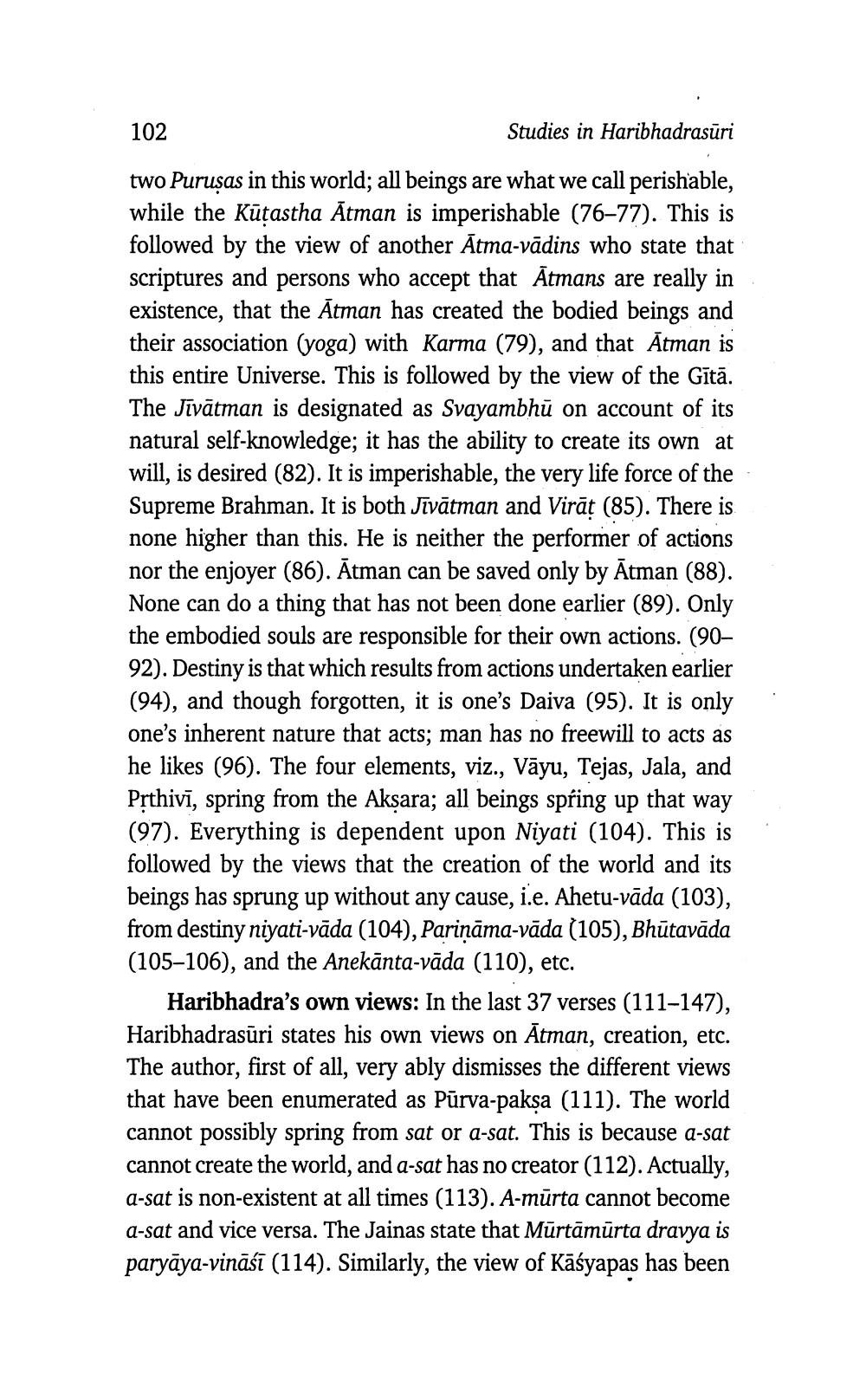________________
102
Studies in Haribhadrasūri
two Purusas in this world; all beings are what we call perishable, while the Kūčastha Ātman is imperishable (76-77). This is followed by the view of another Atma-vādins who state that scriptures and persons who accept that Ātmans are really in existence, that the Ātman has created the bodied beings and their association (yoga) with Karma (79), and that Ātman is this entire Universe. This is followed by the view of the Gītā. The Jivātman is designated as Svayambhū on account of its natural self-knowledge; it has the ability to create its own at will, is desired (82). It is imperishable, the very life force of the Supreme Brahman. It is both Jivātman and Virāt (85). There is none higher than this. He is neither the performer of actions nor the enjoyer (86). Ātman can be saved only by Atman (88). None can do a thing that has not been done earlier (89). Only the embodied souls are responsible for their own actions. (90– 92). Destiny is that which results from actions undertaken earlier (94), and though forgotten, it is one's Daiva (95). It is only one's inherent nature that acts; man has no freewill to acts as he likes (96). The four elements, viz., Vāyu, Tejas, Jala, and Prthivī, spring from the Aksara; all beings spring up that way (97). Everything is dependent upon Niyati (104). This is followed by the views that the creation of the world and its beings has sprung up without any cause, i.e. Ahetu-vāda (103), from destiny niyati-vāda (104), Pariņāma-vāda (105), Bhūtavāda (105–106), and the Anekānta-vāda (110), etc.
Haribhadra's own views: In the last 37 verses (111–147), Haribhadrasūri states his own views on Ātman, creation, etc. The author, first of all, very ably dismisses the different views that have been enumerated as Pūrva-paksa (111). The world cannot possibly spring from sat or a-sat. This is because a-sat cannot create the world, and a-sat has no creator (112). Actually, a-sat is non-existent at all times (113). A-mūrta cannot become a-sat and vice versa. The Jainas state that Mūrtāmūrta dravya is paryāya-vināšī (114). Similarly, the view of Kāśyapas has been




